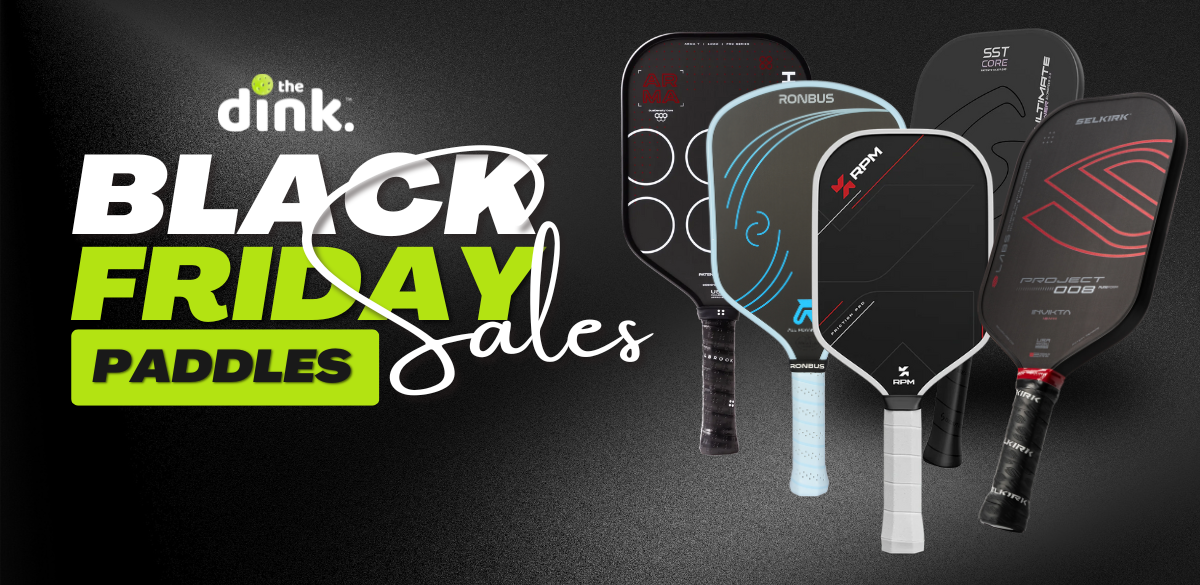Pro Ryan Fu walks through the mechanics, positioning, and strategic timing of one of pickleball's most underrated weapons.
There's a moment in pickleball when everything clicks. You're at the kitchen line, your opponent pops the ball up just slightly, and you've got that split second to decide: go for it or play it safe?
Pro Ryan Fu has the blueprint to make that moment count.
In a recent video, "Perfect The Forehand Dink," Fu walks through the mechanics, positioning, and strategic timing of one of pickleball's most underrated weapons.
The forehand dink isn't flashy. It won't win you many style points. But master it? You'll control the kitchen like you own the deed to the house.
The Grip Question: Why Continental Matters More Than You Think
Here's where most players get it wrong. They think the grip is just a grip. Fu favors the continental grip, because it keeps you ready for what comes next.
If you pop that dink up and your opponent crushes it back at your backhand, you're already in position. You don't have to scramble or adjust mid-rally. Compare that to players using an eastern or semi-western grip, which gives you more brush on the ball but forces you to reset if that backhand counter comes flying at your chest.
"If I have a continental grip, I dink and then I'm ready for the backhand counter," Fu explains in the video. It's a small detail that separates players who react from players who anticipate.
Now, if you're running a two-handed backhand counter, the calculus changes. You've got more flexibility because you're not worried about that single-handed backhand response. But for most players? Continental is your friend.
Pro Michael Loyd’s ‘Two-Thing Rule’ for Hitting High-Percentage Pickleball Counters
At any given moment, you should only be concerned about the two most likely shots your opponent can hit. That’s it. It sounds complicated at first, but it’s actually liberating.
 The Dink PickleballThe Dink Media Team
The Dink PickleballThe Dink Media Team

Paddle Position: Tip Down, Brush Up
This is where the magic happens. Fu emphasizes something that sounds simple but trips up so many intermediate players: your paddle tip needs to be facing the ground.
Think about what you're trying to do.
- You want spin.
- You want control.
- You want that ball to dip just over the net and die.
To get there, you're brushing from down to up, generating topspin that keeps the ball low and makes it harder for your opponent to attack.
If your paddle tip is up? Forget about it. You're either netting the ball or sending it high enough for your opponent to attack. The whole point of the forehand dink is precision, and precision starts with paddle angle.
Fu also hammers home another critical point:
Don't turn the paddle face over. Keep it facing the court the entire time through contact.The more you come over the top of the ball, the more likely it is to either sail into the net or pop up high enough to get punished.
Here's a mental trick Fu suggests: lead with the butt cap. If you're pushing the butt cap forward, it's nearly impossible to turn that paddle over. Your wrist stays locked, your paddle face stays open, and you maintain control. Lead with the tip instead? Your wrist breaks, your paddle face closes, and suddenly you're in trouble.
Best Black Friday Pickleball Paddle Deals (2025 Guide)
Best Black Friday Pickleball Paddle Deals 2025 are finally here Here are our top picks for the best 2025 Black Friday Deals for Pickleball Paddles.
 The Dink PickleballLuke Burton
The Dink PickleballLuke Burton

The Follow-Through: Finish on Your Side
The follow-through is where players reveal whether they actually understand what they're doing. Fu compares it to Rafael Nadal's forehand in tennis, which is a pretty good visual. You want to finish on the same side of your body.
If you're finishing over your opposite shoulder, the ball's going to pop up. You're not keeping it compact. You're taking your paddle behind your body instead of keeping it in front. That's a recipe for disaster at the kitchen line.
The compact finish keeps everything controlled. Whether you're hitting an inside-out dink or a crosscourt dink, that follow-through tells the story of whether you've got command of the shot.
The Bigger Picture: Balance and Consistency Win
After breaking down all the technical details, Fu circles back to something that matters more than any individual tip: balance and consistency.
"I'm getting behind the ball every time on this forehand dink, and I'm staying low throughout the contact every time," Fu says.
"I'm going to keep my balance the whole time. That's going to help more than any of the other tips that I just told you."The forehand dink might seem like a small part of your pickleball toolkit, but it's actually foundational. It's the shot that lets you control the kitchen. It's the shot that sets up your winners. It's the shot that separates players who are just hitting the ball from players who are actually playing pickleball.
Heads up: hundreds of thousands of pickleballers read our free newsletter. Subscribe here for cutting edge strategy, insider news, pro analysis, the latest product innovations and more.
Anuncie Aqui / Advertise Here
Sua marca para o mundo Pickleball! / Your brand for the Pickleball world!

 English
English  Spanish
Spanish  Portuguese
Portuguese  German
German  Italian
Italian  Japanese
Japanese  French
French  Polish
Polish  Russian
Russian  Netherlands
Netherlands  Hungarian
Hungarian  Turkish
Turkish  Videos
Videos 








 English (US) ·
English (US) ·  Portuguese (BR) ·
Portuguese (BR) ·